Japanese Woodblock Prints
Introduction
Text-to-speech Audio
It is difficult to imagine that these Japanese pictures weren’t made yesterday on a modern printing press or painted by hand, but these colorful and detailed prints were made with carved blocks of wood, one for each color, in the late 1800s. Each of these framed pictures is composed of three woodblock prints that show one continuous scene called a triptych. Five of these tryptichs were designed by Toyohara Chikanobu. The sixth one, “Bakufu Crossing the River on Shoulders,” was designed by Shogetsu Toshu in 1889...
Click on the first image to enlarge the pictures and open the slide show...
Images
Courtyard scene by Toyohara (Yoshi) Chikanobu (1838-1912)
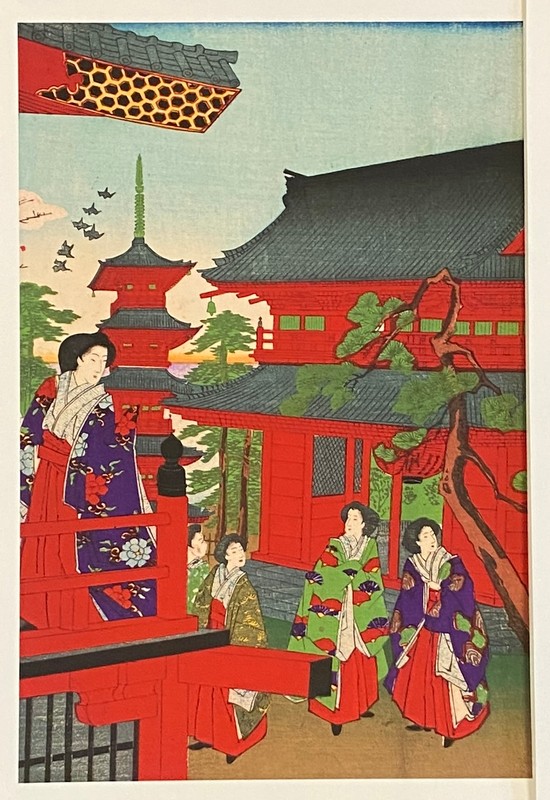
"The Emperor Enjoys A Cool Evening" by Toyohara (Yoshi) Chikanobu (1838-1912)
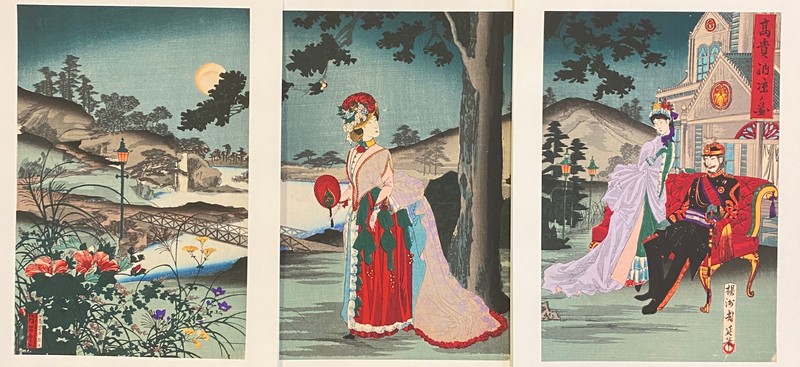
"Singing by the Plum Garden" by Toyohara (Yoshi) Chikanobu (1838-1912)
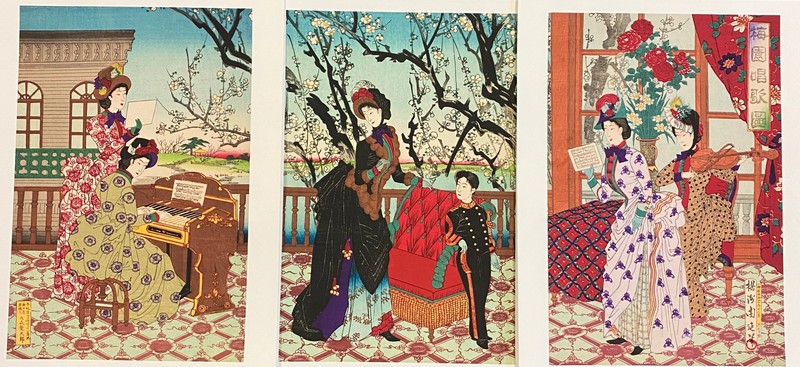
"Evening Cool" 1887 by Toyohara (Yoshi) Chikanobu (1838-1912)
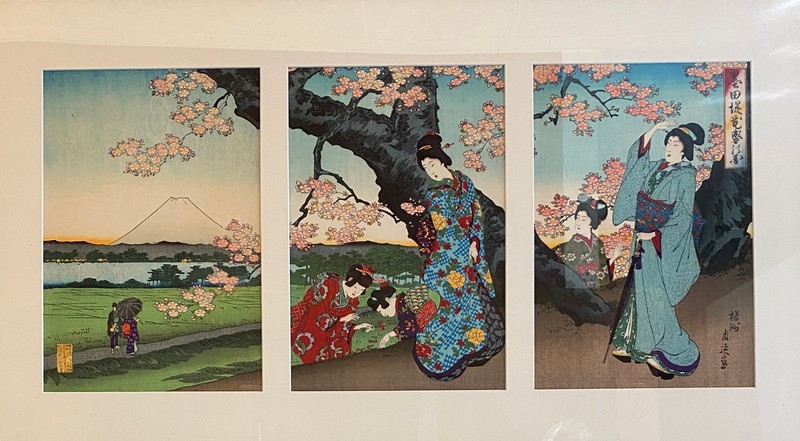
Unknown palace courtyard by Toyohara (Yoshi) Chikanobu (1838-1912)
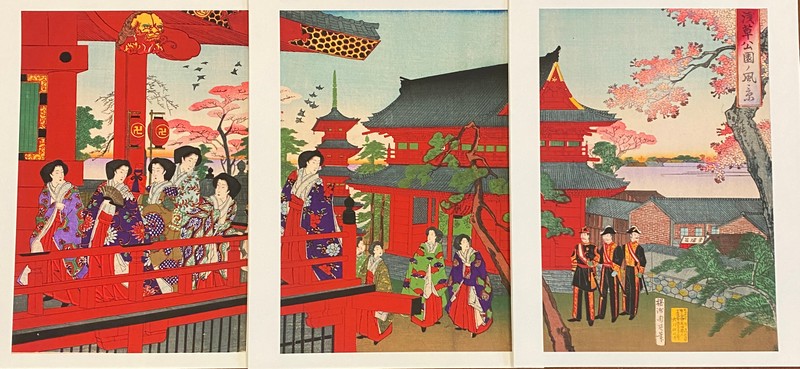
"Unknown Name" by Toyohara (Yoshi) Chikanobu (1838-1912)
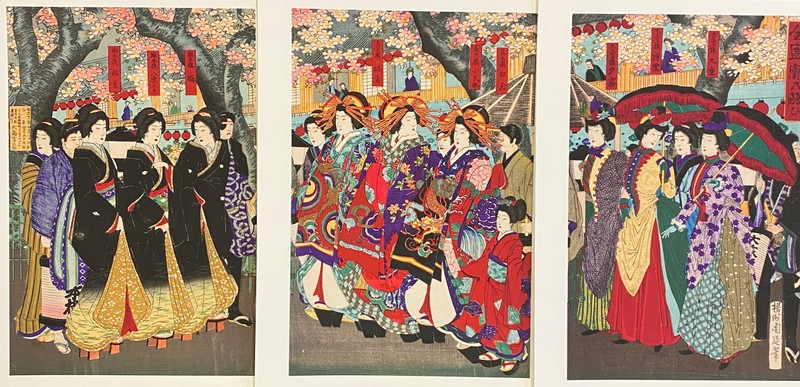
"Bakufu (Shogun) Crossing River on Shoulders" (1889) by Shogetsu Toshu
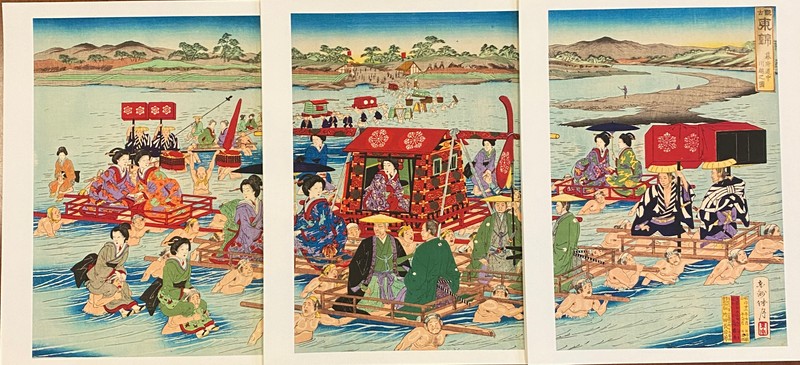
Kabuki Actors with a Japanese Sparrowhawk by Utagawa Kunisada (Toyokuni III) (1786-1865)
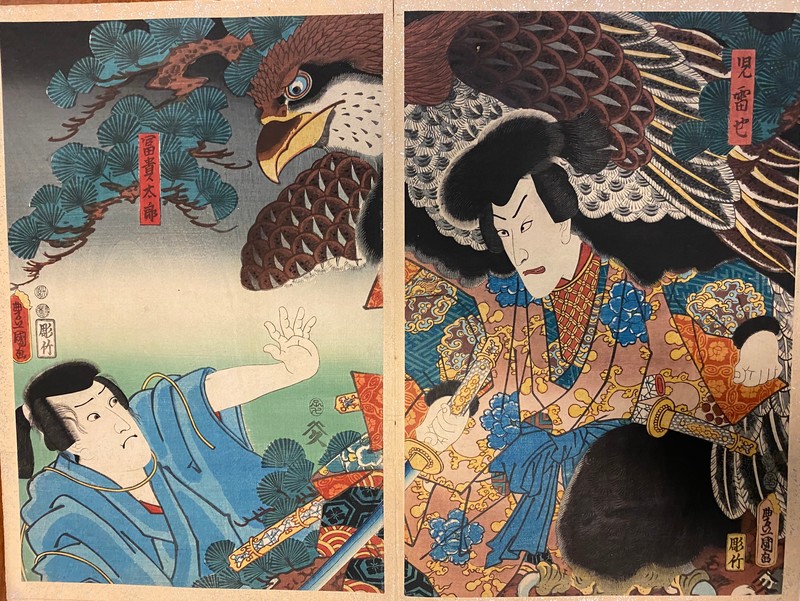
From the "Keinen Kacho Gafu" (Collection of Birds) by Imao Keinen (1845-1924)
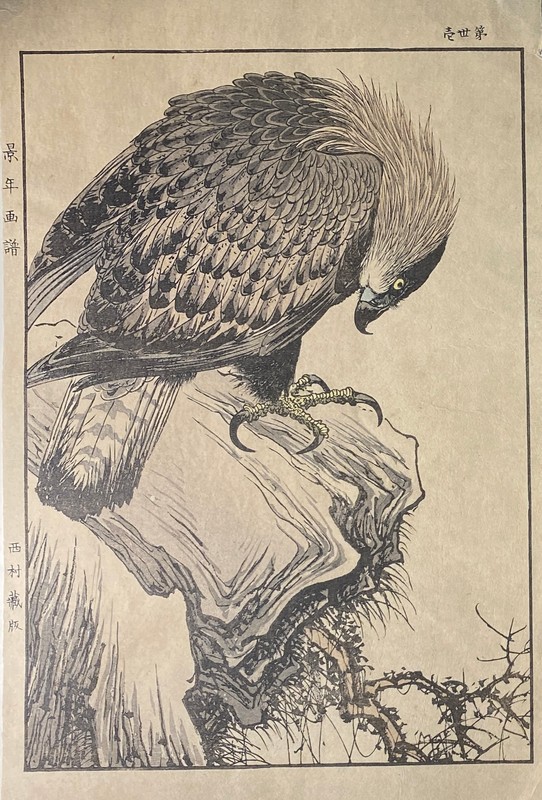
From the "Keinen Kacho Gafu" (Collection of Birds) by Imao Keinen (1845-1924)
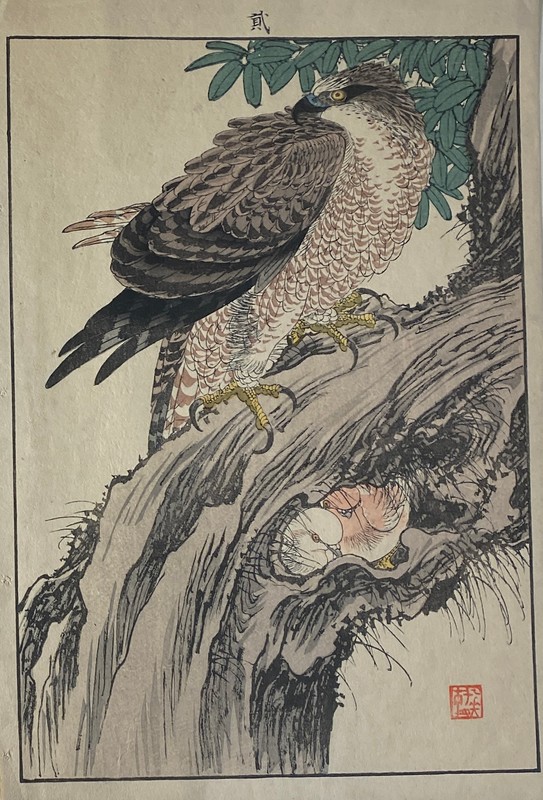
"The Pond of Sarusawa, Nara, on a Rainy Evening" by Tsuchiya Koitsu (1879-1949)
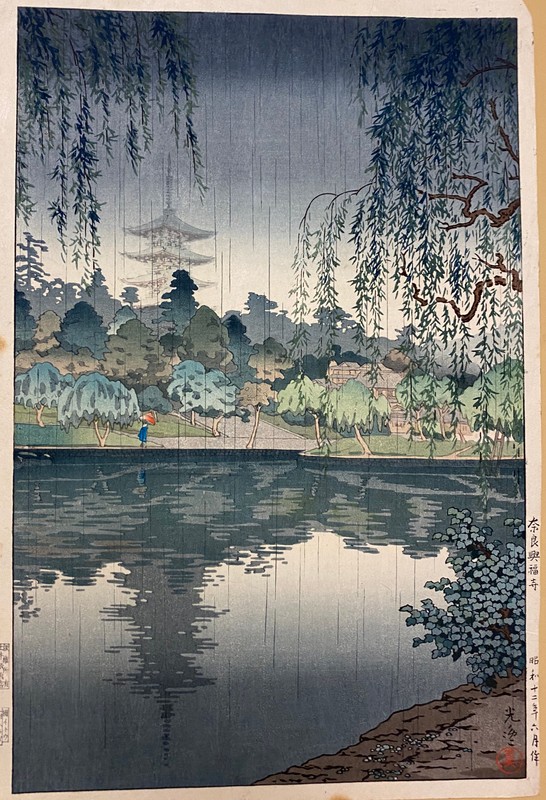
"Fujiyama from Miho" by Hiroshi Yoshida (1876-1950)
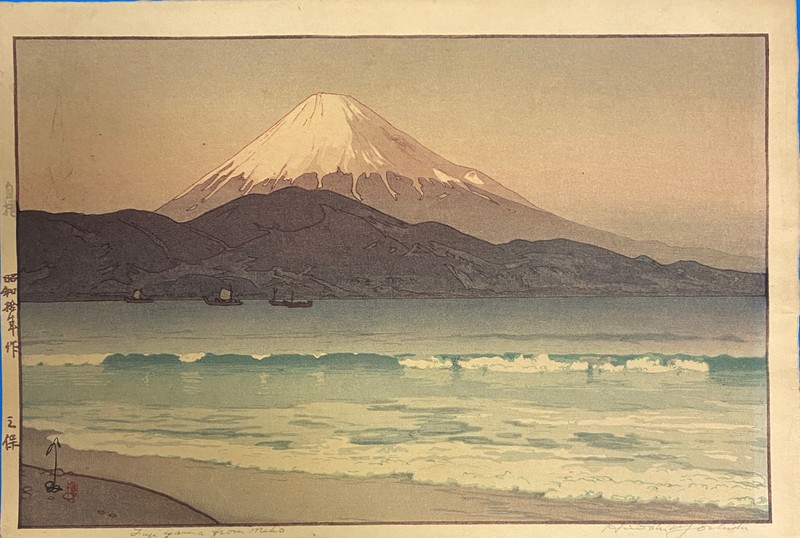
Carved woodblock of the legendary samurai warrior, Kintaro, showing raised lines for one color
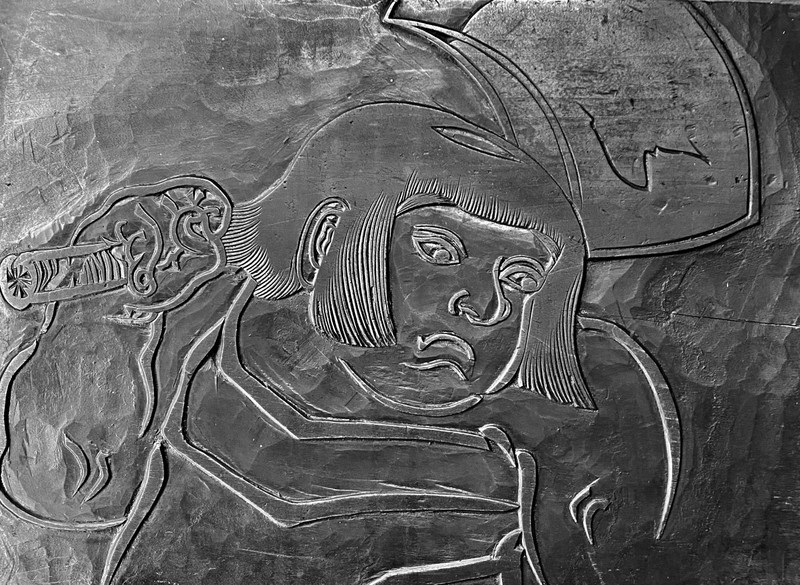
The first stage of printing a woodblock print is to impress the black line contours of the subject.
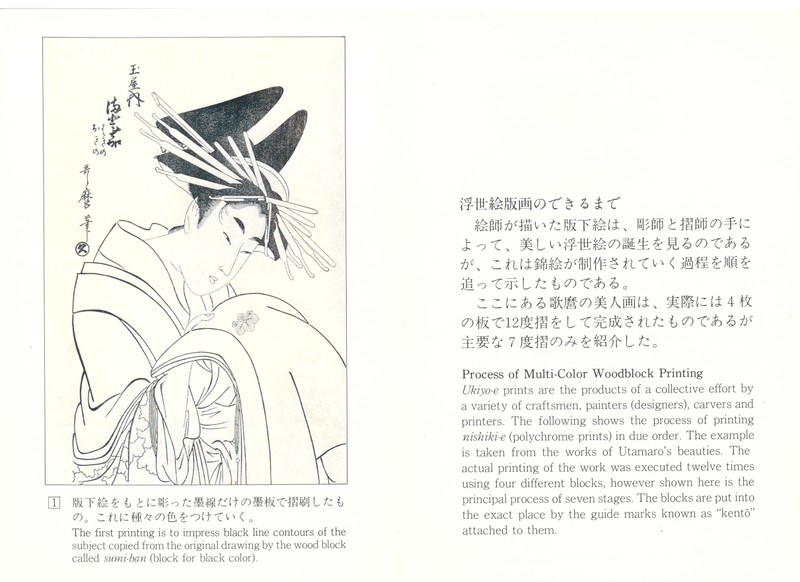
The second stage adds yellow color in all spots necessary.
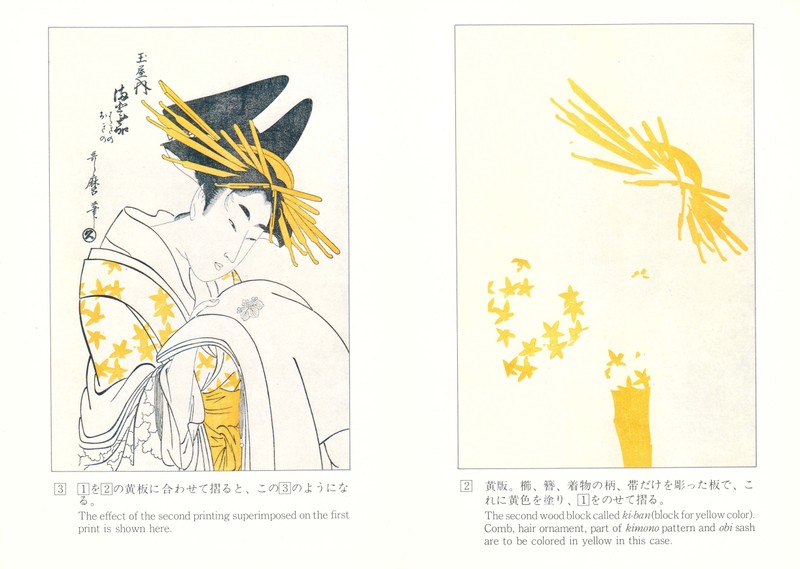
The third woodblock adds red to the picture.
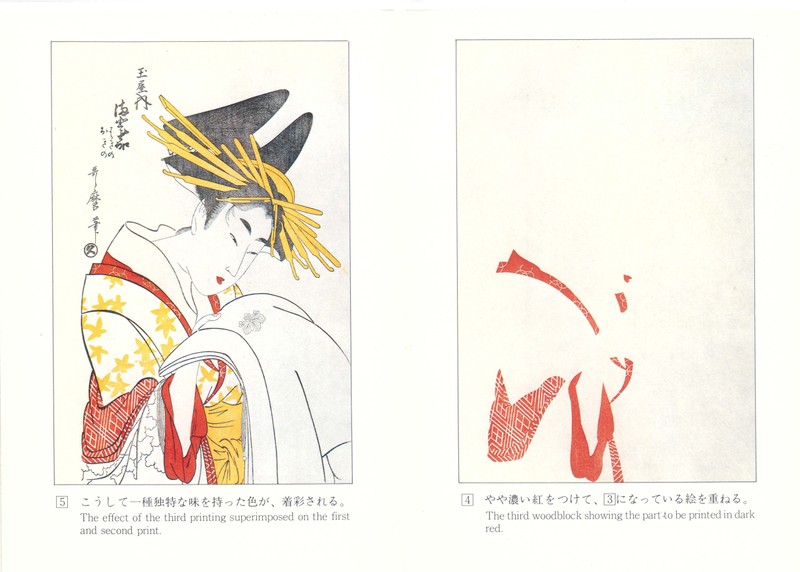
The fourth block adds green to her garment.
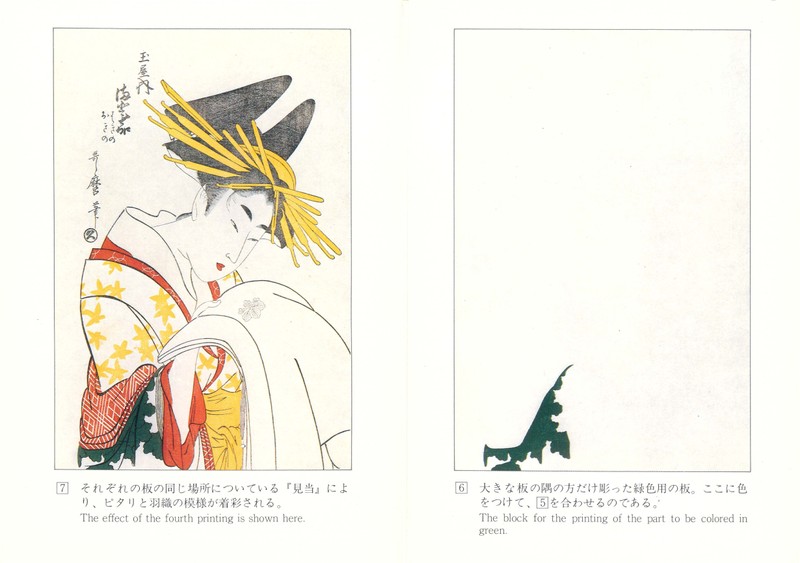
Stage five adds purple to the print.
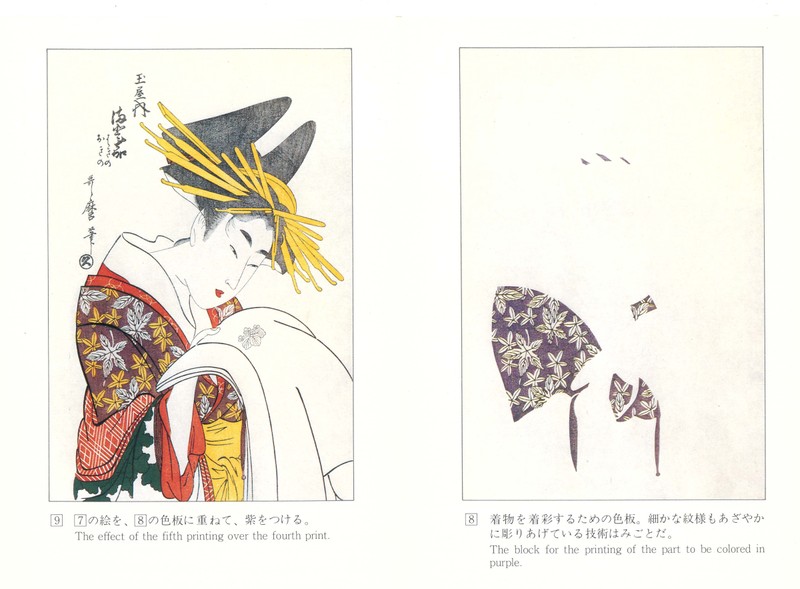
The sixth printing re-prints the indigo-blue part to make it darker.
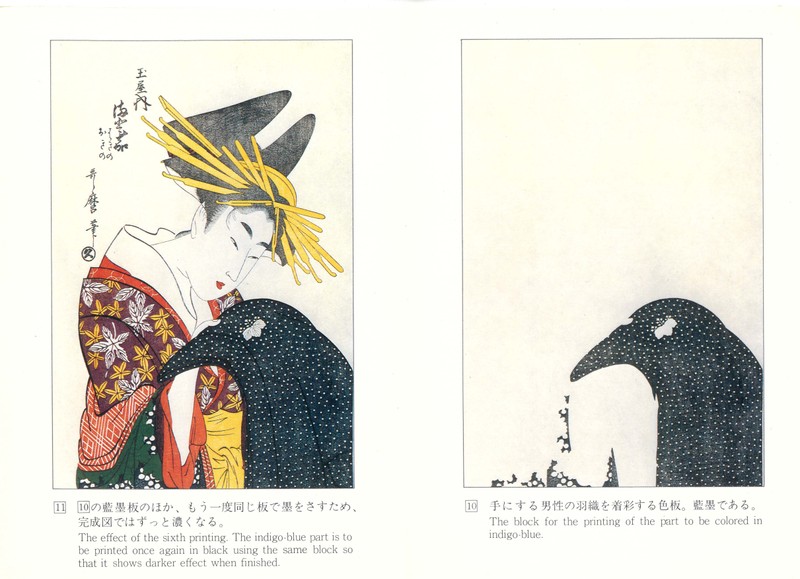
The last block adds black pigment mixed with glue to create the glossy effect on her hair.
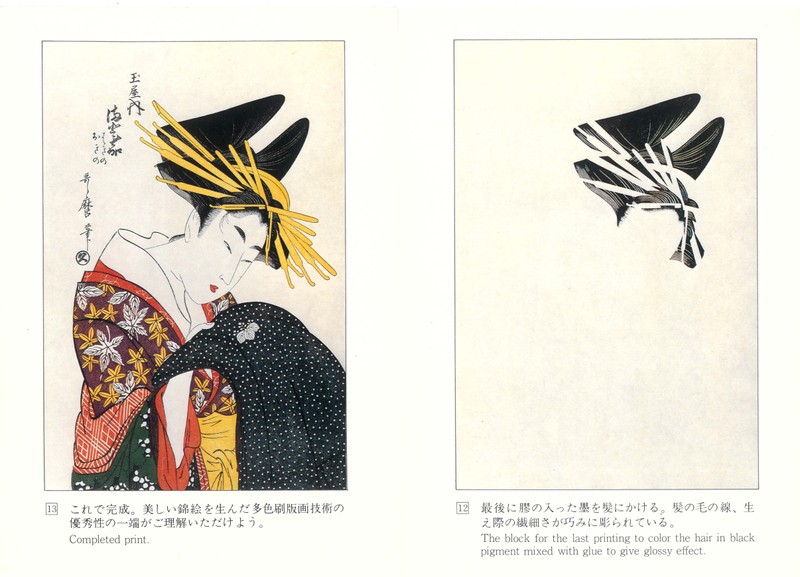
Backstory and Context
Text-to-speech Audio
Making Woodblock Prints...
Making these woodblock prints was the work of a whole team of artisans.The process began with an artist and involved carvers, printers, and papermakers. Following the designs and colors in the picture submitted by the artist, master carvers precisely carved up to 15 individual blocks, one for each color in the picture. On each block, the carver chiseled away the wood around the areas intended for one color. The printer then applied ink onto those raised areas and, lining up the paper to match the carver’s registration marks, pressed the paper firmly down onto the block.The printer repeated these steps using the woodblocks carved for each color of the picture until the entire print was completed, an exacting and time-consuming process. The beautiful result was prints with no overlapping colors or lines...
The number of identical prints that can be made from one set of blocks is limited. Eventually the areas start to show significant wear. Over time the colors become so saturated into the wood that producing clear details is nearly impossible. Therefore, woodblock prints vary in quality during a long production run. The six triptychs on display are remarkable for their perfect details and vibrant colors...
Ukiyo-e prints...
The woodblock prints on exhibit are just a sample of the over 150 ukiyo-e woodblock prints in the Howard Collection. Margaret Howard collected so many because they were very popular at the time. They afforded the first glimpse many people had of the newly opened Japan. The French impressionists collected and studied them, incorporating into their own pictures many of the Japanese qualities: asymmetry, broad areas of color and pattern, expressive stylized lines, abstraction, and emphasis on the flatness of the picture plane. It was the day of “japonisme...”
Woodblock prints had been known in Japan since at least the eighth century, but around 1680 publishers realized that profits could be made selling popular prints to the newly affluent urban commoners. These woodblock prints acquired the name of ukiyo-e prints, referring to the “floating world” (ukiyo) of the entertainment districts of the major cities. Eventually the meaning grew to include fashionable pleasures in general, and the prints reflected these pleasures: prints of Kabuki theater actors, beautiful women, landscapes, nature, and current events...
Toyohara (Yoshi) Chikanobu...
Five of these six woodblock prints were designed by the artist Toyohara (Yoshi) Chikanobu (1838-1912). Born into the samurai class, Chikanobu was both an artist and a samurai. He was trained in calligraphy, painting and literature, as well as military skills. He got caught up in the dissolution of the Shogun’s rule during the Meiji Restoration of 1868, which ended samurai rule and put power in the hands of the emperor. Chikanobu fought in the samurai rebellion against the imperial army and only escaped serious punishment because of his youthful reputation as an artist. He resumed his artistic career in 1871 at the age of 33 and began to produce a huge body of work that would merge social history with self-expression...
His works depict changes during the late 19th century when Japan’s “closed door” was opened, and western ideas began to spread throughout Japanese society. Ordinary Japanese people knew nothing about the royal family, but because the government wanted to create a national identity, artists were encouraged to portray the lives of the rich and famous--and that included royalty. Chikanobu probably never saw the emperor’s family, but he depicted many of their activities and public appearances. The emperor, along with his new imperial army, wore western style military uniforms. Many women chose to wear English Victorian clothes. These changes to modern dress were frequently pictured in his work. Later in his career Chikanobu became nostalgic and produced pictures of more traditional subjects and beautiful landscapes...
Chikanobu’s work was very popular, and he made a very good living. He broke with tradition by depicting current events. His special signature was his amazing sense of style and his intense spirit. He took traditional ideas and molded them with his own unique inspiration to create highly original pieces that were fresh, complex, colorful, and detailed. He continued to produce woodblock prints until his death in 1912...
Japanese artists still make woodblock prints using the same methods. To watch a modern video showing artisans making woodblock prints, visit: YouTube “The Great Wave by Hokusai: Great Art Explained" by following the link below...
Cite This Entry
STW on behalf of Assistance League of Long Beach. "Japanese Woodblock Prints." Clio: Your Guide to History. January 2, 2024. Accessed April 2, 2025. https://theclio.com/entry/171765/tour/7/reverse
Sources
Coats, Bruce. Chikanobu: Modernity and Nostalgia in Japanese Prints. Hotei Publishing, 2006.
Kikuchi, Sadao. Process of Multi-Color Woodblock Printing. Tokoyo, Japan. Benrido Company, LTD, 1984.
Burnham, Helen. Thompson, Sarah E. LOOKING EAST: WESTERN ARTISTS AND THE ALLURE OF JAPAN. Boston, Mass. Museum of Fine Arts Publications, 2014.
"The Great Wave by Hokusai: Great Art Explained." Great Art Explained. https://youtu.be/IBcB_dYtGUg?si=V40LbtMeIHNJTm7D
Howard Collection 64.01.14 B
Howard Collection 64.01.13 A-C Woodblock Print Triptych
Howard Collection 64.01.12 A-C Woodblock Print Triptych
Howard Collection 64.01.18 Woodblock Print Triptych
Howard Collection 64.01.01.14 A-C
Howard Collection 61.01.15 A-C Woodblock Print Triptych
Keio University Library has a copy of a Howard Collection 64.01.19 A-C Woodblock Print Triptych
Howard Collection 64.01.02 A-B
Asian Art Collection 61.257 A
Asian Art Collection 61.257 B
Howard Collection 61.249
Howard Collection 61.248
Howard Collection 84.10
Kikuchi, Sadao. Process of Multi-Color Woodblock Printing
Kikuchi, Sadao. Process of Multi-Color Woodblock Printing
Kikuchi, Sadao. Process of Multi-Color Woodblock Printing
Kikuchi, Sadao. Process of Multi-Color Woodblock Printing
Kikuchi, Sadao. Process of Multi-Color Woodblock Printing
Kikuchi, Sadao. Process of Multi-Color Woodblock Printing
Kikuchi, Sadao. Process of Multi-Color Woodblock Printing

